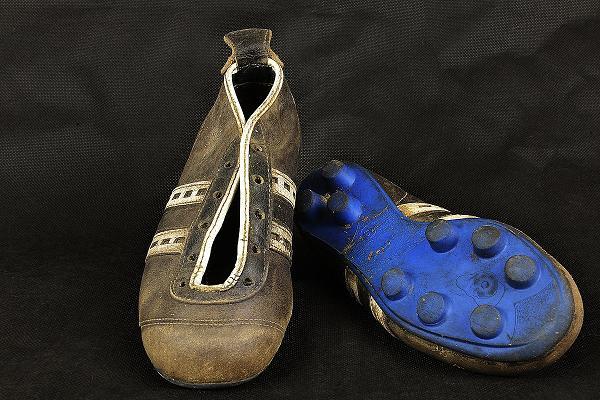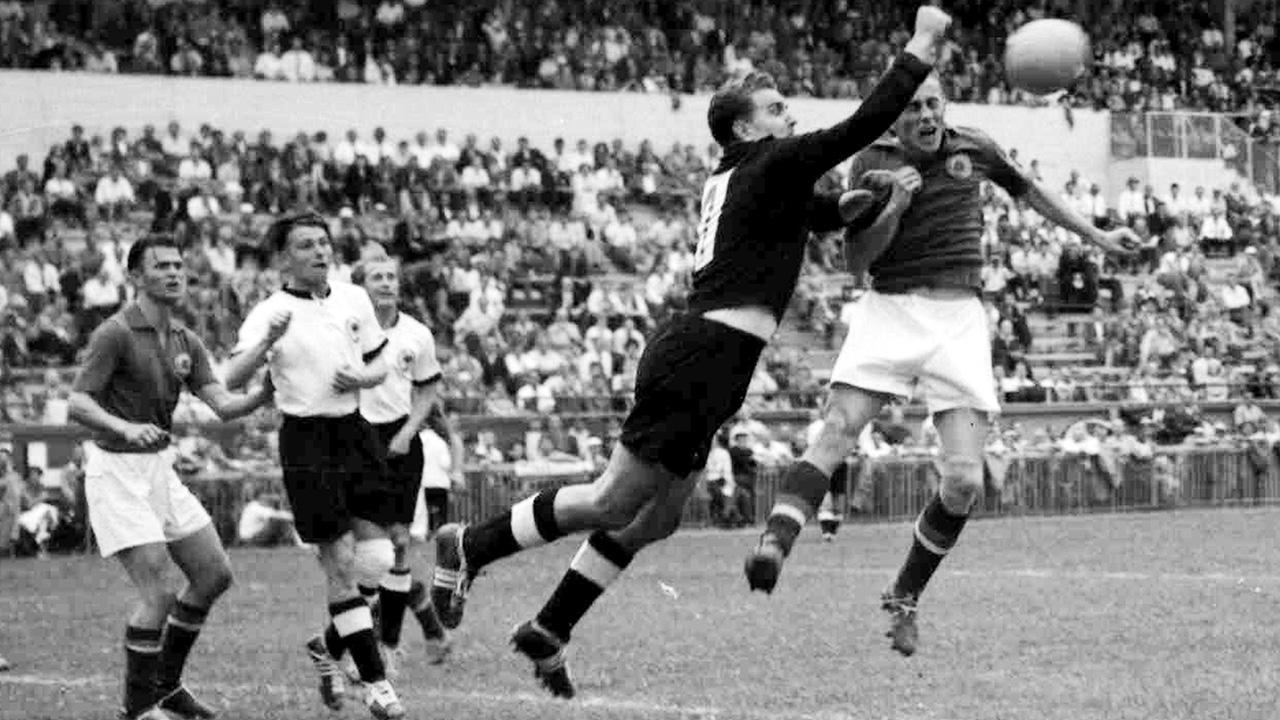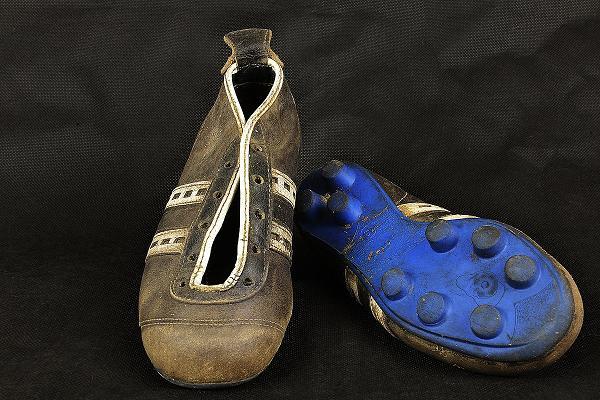When the German national soccer team won the World Cup in 2014, the whole country got on a razzle-dazzle. The fans of the team were expecting the cup for many years, and it was a kind of a relief to finally become the best Mannschaft of the World for the fourth time.
There was a triumph in soccer in the past that was much more important for Germany and the Germans than the last one. It was the championship of the year 1954 where the so-called “Wunder von Bern” (Miracle of Bern) took place.
Before the World Cup
During the inter-war period, German football stood as one of the strongest forces in Europe. In 1934, the Mannschaft secured a third-place finish at the World Cup by defeating the Austrian Wunderteam in the play-off. In the subsequent three years, Sepp Herberger’s Breslau Elf, named after their remarkable 8-0 victory over Denmark in Breslau, achieved an impressive undefeated streak of 11 games (with 10 wins). However, the political changes brought about by the Anschluss in 1938 united Germany in a way that belied internal discord, leading to a disappointing World Cup campaign ending in defeat to the Swiss.
The outbreak of the Second World War transformed football into a tool of propaganda, with the Nazi regime championing the continued league system as “proof of morale.” Throughout the conflict, Herberger, who had been the sole manager of the national football team since 1936, made concerted efforts to safeguard his players.
Faced with restrictions on front-line passes, he resorted to falsifying documents to secure passes for his team members. Additionally, he sought to place his squad members in positions away from the front lines, with players like Fritz Walter, Herberger’s prized talent, obtaining relatively secure roles at an airforce base, coincidentally home to one of the nation’s top football teams.
Despite Herberger’s earnest attempts, the horrors of war took their toll. Adolf Urban, Schalke’s star striker and a member of the Breslau Elf, exemplifies the tragedy. After contributing to his club’s league triumph in 1942 and playing in their cup final defeat to 1860 Munich, Urban’s last match marked the beginning of a fateful journey to Stalingrad. Like nearly two million others on both sides, he never returned home.
A Comeback
In February 1950, Sepp Herberger reestablished a West German national team, making a comeback after surviving the post-war denazification process, despite his party membership since 1933. In September of the same year, the country gained admission to FIFA, and in November, West Germany participated in their first post-war international match against Switzerland in Stuttgart. Herberger’s team secured a 1-0 victory, but this outcome didn’t really signal the emergence of a new footballing powerhouse.
The Importance of the Match in Bern
It was more than a soccer game. It was an event that gave the Germans the feeling that they could reach something in the world unrelated to terror and war.
Not even ten years earlier, World War II ended with millions of people dead. Germany was still lying in ashes, and the guilt of what happened was visible in everyday life, not to mention the country’s status inside the international community.
It Seemed West Germany Had No Chance
It was an occupied country feeling really lost, and it wasn’t even clear what would happen to it or if it could ever be “normal” again. Also in matters of soccer, Germany had to endure the consequences of the war and the Holocaust: The German soccer association (Deutscher Fußball Bund, DFB) had been dissolved in 1940, and almost every nation boycotted the German national soccer team since then. Only the Swiss team has played some international matches against Germany. Thus, the World Cup was an excellent opportunity for the Mannschaft to gain some international sporting experience again.
In the early 1950s, lost and in need of inspiration, Germany tried to stabilize itself. The economy was also growing. International acceptance got bigger after the foundation of the Bundesrepublik in 1949.
Chancellor Konrad Adenauer tried to show the world slowly that not all Germans are evil. Also, the national team had been accepted to participate in the championship for the first time after the war. Although the players had little experience, they managed to get through the tournament and reached the final game against Hungary.

© Pixabay
The Tense 1954 World Cup Final
In the lead-up to the World Cup final known as “The Miracle of Bern,” Hungary advanced to the semis with a tough 4-2 victory against Brazil, while West Germany secured their spot with a 2-0 win over Yugoslavia. Hungary faced Uruguay in the semi-finals, leading 2-0 before a dramatic comeback resulted in a 4-2 victory in extra time. Meanwhile, West Germany breezed past Austria with a 6-1 win, setting the stage for the final.
The Legendary Hungarian Mighty Magyars Take the Lead
From June 1950 until the commencement of the 1954 World Cup, the Mighty Magyars enjoyed an unbeaten streak, participating in 30 matches and securing a second Olympic gold medal. Undefeated for four years, they had even beaten England 6-3 and 7-1 in the months preceding the World Cup, maintaining their prolific scoring form throughout the tournament. Remarkably, Hungary had previously routed West Germany 8-3 during the group stages.
As they returned to Budapest after their triumphant venture in Helsinki, the team’s train was halted at every station by jubilant crowds. In the capital, a staggering 400,000 people filled the streets to welcome them home. The German captain, Fritz Walter, had faced Hungary in a crucial game back in 1945, escaping a grim fate during the collapse of Germany.
Now, nine years later, Walter led his team to the World Cup final in Bern, where the weather and a muddy pitch favored West Germany. Despite Hungary taking an early 2-0 lead, a miraculous turn of events unfolded.
Ferenc Puskas, as expected, delivered the opening goal, and shortly after that, Zsoltan Czibor took advantage of a misunderstanding between Werner Kohlmeyer and goalkeeper Toni Turek, rubbing salt into the wounds of the German team. At that point, it seemed like the game was effectively over.
Turn of Events at the Wankdorf Stadium

However, Helmut Rahn’s goal in the 10th minute and then Max Morlock sliding the ball home set the stage for a comeback. Fritz Walter’s corner led to Rahn scoring the second, leveling the score at 2-2. With six minutes left, Rahn’s powerful shot secured a 3-2 lead for West Germany.
The iconic commentary of Herbert Zimmerman captured the moment as Helmut Rahn scored the winning goal, with the legendary words “Tor! Tor! Tor! Tor! Tor fur Deutschland! Drei zu zwei führt Deutschland! Halten Sie mich für verrückt, halten Sie mich für übergeschnappt!” (“Germany leads 3-2! Call me mad, call me crazy!”). Despite late attempts by Hungary, including a controversially disallowed goal and a brilliant save by the German goalkeeper Toni Turek, West Germany held on to win 3-2, becoming world champions.
The Impact of the “Wunder von Bern”
The win evoked a sheer wave of euphoria all over Germany. The anticipated final was poised to be a routine coronation for the seemingly invincible Hungary team, and in fact, reports later revealed that out of the 40 journalists present and asked for pre-match predictions, only one had dared to forecast a German victory.
“Suddenly Germany was somebody again”
The triumph proved transformative for the victors and Franz Beckenbauer famously said, “Suddenly Germany was somebody again. For anybody who grew up in the misery of the post-war years, Bern was an extraordinary inspiration. The entire country regained its self-esteem.”
The notable players traveled back in a special train that stopped in many West-German cities where the heroes of Bern were celebrated frenetic. The world cup was not only the first time a German team was allowed to participate and also not only the first time the German national anthem played on an official sports event, but it was also the starting signal for the Wirtschaftswunder. In this time started the rapid rise of the German economy that gave people prosperity and self-esteem again. Even today this event is still vivid in Germany’s collective memory.
New Victories
The victory marked Germany’s first of four World Cup triumphs, with subsequent titles coming in 1974 and 1990 as West Germany and in 2014 as a reunified Germany. West Germany became the third nation to clinch a World Cup, following Uruguay (1930 and 1950) and Italy (1934 and 1938). Notably, West Germany secured its first title as a guest rather than a host nation, distinguishing it from Uruguay and Italy.
For Hungary, the second-place finish in 1954 remains their best World Cup outcome to date, sharing this achievement with their runner-up status in 1938. The 1954 tournament stands as the only FIFA World Cup to date where two Central European teams contested the final, and Austria, another Central European team, secured third place in the competition.
The still divided German nation hosted the 1988 European championship. In the following two years, West and East Germany were on the brink of becoming one country, and players from both sides played crucial roles in the national team that secured victory in the 1990 World Cup in Italy.
Interesting Facts
Here are some curious facts related to this football championship. Let’s start with some…
Quick Facts
- When: 16 June 1954 to 4 July 1954.
- Goals Scored: 140 (average 5.4 per match)
- Attendance: 768,607 (average 29,561)
- Matches: 26.
- Teams: 16.
Teams that Played at the 1954 World Cup in Switzerland:
Korean Republic, Austria, Belgium, Czechoslovakia, England, France, Germany, Hungary, Italy, Scotland, Switzerland, Turkey, Yugoslavia, Mexico, Brazil and Uruguay.
Innovations
The tournament was televised for the first time. Matches that were level after 90 minutes proceeded to extra time. If the scores remained tied after 120 minutes of play, they were considered drawn.
Accommodation for the Teams
Throughout the tournament, the Hungarian team stayed in a hotel located in the town center of Solothurn, and this decision ended up leading to various consequences. For instance, after the semi-final against Uruguay, which extended into extra time, the team missed the return bus from Lausanne and had to arrange private cars that arrived late at night. On the eve of the final, a village fair took place in front of the hotel, lasting until the early morning hours and disrupting the players’ sleep. Also, Albert Sing, Herberger’s assistant, checked into the same hotel and reported on the Hungarian team’s preparations.
In contrast, the German team chose to reside in the serene lakeside town of Spiez, shielding them from such disturbances. The “Spirit of Spiez” became a proverbial expression in Germany, symbolizing the team’s high morale and camaraderie.
Tactics
Puskás made a return to the Hungarian squad for the final, despite concerns about his fitness. Additionally, Sebes made changes to the lineup by substituting the usual right winger, László Budai, with Mihály Tóth, considering Budai too fatigued after the semi-finals. Furthermore, in the first half, Sebes positioned left winger Czibor on the right (later switching with Tóth) to leverage Czibor’s speed against Germany’s left fullback Werner Kohlmeyer. Apart from these adjustments, Sebes adhered to his standard formation.
On the other hand, the German team underwent evolution throughout the tournament, finalizing its formation only in the semi-finals. West Germany’s first match was against Turkey, resulting in a 4–1 victory. In the subsequent 3–8 defeat to Hungary, Herberger strategically rested several pivotal players and deployed others in unconventional positions, such as Fritz Walter as a central striker instead of in his usual playmaker role. The primary objective was to conserve energy for the impending decisive match where they had to beat Turkey once again. However, by opting not to field his strongest eleven, Herberger might have inadvertently kept the true strength of the German team veiled from subsequent opponents, including Hungary.
Weather Conditions
The game unfolded under heavy rain, a scenario the German team humorously referred to as “Fritz Walter weather,” attributing the term to Walter’s reputation for excelling in wet playing conditions.
Equipment
Furthermore, the German team benefited from Adidas-supplied boots with innovative, interchangeable screw-in studs, previously unheard of. Apparently, these boots could be customized to suit various weather conditions, allowing the German players to use their standard footwear despite the challenging weather.
Response in Germany
The surprising victory sparked a surge of joy and celebration throughout the entire country. Expressions of national pride were still influenced by the recent history of the war. Numerous commentators, including Arthur Heinrich and Joachim Fest, considered the 1954 triumph as a pivotal moment in post-war German history.
According to Fest, “It was a kind of liberation for the Germans from all the things that weighed down upon them after the Second World War… July 4, 1954 is in certain aspects the founding day of the German Republic.” Moreover, the World Cup final marked the first occasion since the Second World War when the German national anthem was played at a global sporting event.
Film
“Das Wunder von Bern” (“The Miracle of Bern”) is a 2003 German film directed by Sönke Wortmann. It tells the story of a German family, focusing on a young boy and his despondent ex-POW father Richard, against the backdrop of the unexpected West German football triumph in the 1954 World Cup Final in Bern, Switzerland.
The film serves as a portrayal of post-war Germany, and with over 6 million cinema attendees, it stands as one of Germany’s highest-grossing films. Dignitaries such as Chancellor Gerhard Schröder, Peer Steinbrück, Minister-President of North Rhine-Westphalia, and Otto Schily, Federal Minister of the Interior (who is colloquially referred to as the Minister for Sports), were present at the premiere.
Memorabilia
The FIFA World Football Museum in Zurich, Switzerland, boasts several unique items from the 1954 World Cup, including the original goal net from the Final and a ticket for this unforgettable football game.
If you’ve enjoyed this article and you want to know more about German culture, we have just the thing for you! Come check out our blog at SmarterGerman for more history and culture of Germany!
FAQs
Here are some of the most frequently asked questions about the 1954 World Cup
Is ‘Das Wunder von Bern’ Based on a true story?
Yes, “Das Wunder von Bern” is based on a true story. The film depicts West Germany’s unexpected victory in the 1954 FIFA World Cup, known as “The Miracle of Bern.”
Why was the World Cup in 1954 so important for Germany?
The World Cup in 1954 was particularly significant for Germany as it marked the country’s first post-war appearance and triumph in the tournament. The World Cup victory had a transformative effect on the nation, boosting morale and providing a sense of new self-esteem and identity, especially in the aftermath of World War II.
Where is ‘Das Wunder von Bern’ set?
“Das Wunder von Bern” is set in Germany, primarily showcasing the events surrounding the 1954 World Cup, including matches and the impact of the German team becoming world champions on the spirit of the entire country.
Who is Helmut Rahn?
Helmut Rahn was a German footballer who played as a forward. Rahn is best known for his crucial role in the 1954 FIFA World Cup final, where he scored the winning goal for West Germany against Hungary, securing the team’s unexpected victory. Rahn’s decisive goal in the final match, played on July 4, 1954, is one of the most iconic moments in German football history.
Why did Argentina withdraw from 1954 World Cup?
Argentina withdrew from the football World Cup in 1938, 1950 and 1954 due to disagreements and disputes over hosting rights and political considerations. This absence spanned 24 years, as the Second World War resulted in the cancellation of the 1942 and 1946 FIFA World Cups.
Summing Up: The Miracle of Bern
In revisiting the historic 1954 World Cup final, we unravel a narrative that transcends sports, defining a nation’s resurgence from the ashes of World War II. “The Miracle of Bern” marks Germany’s football triumph and the profound impact on the collective spirit of the entire country.
This victory, against all odds, became a beacon of hope and a moment when the entire country regained its self-esteem, rebuilding its identity. The unexpected win not only marked the beginning of Germany’s football dominance in the post-war years but also symbolized a turning point in the country’s history. As the national anthem echoed after years of silence, it signified not just a sporting triumph but a renewed sense of purpose and extraordinary inspiration for a nation seeking redemption.
The Miracle of Bern is a real testament to resilience, unity, and the extraordinary power of sports to shape the destiny of an entire nation. If you’d like to know more about our incredible nation, then come check out our blog at SmarterGerman, where we talk about all things German!

